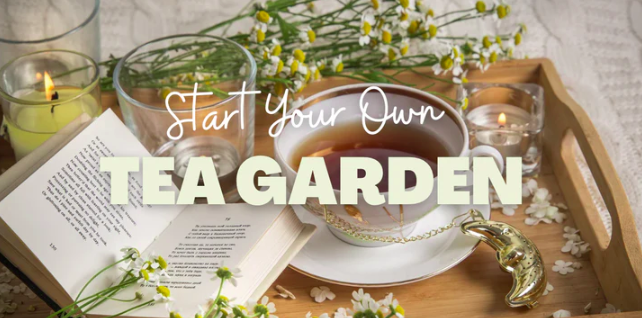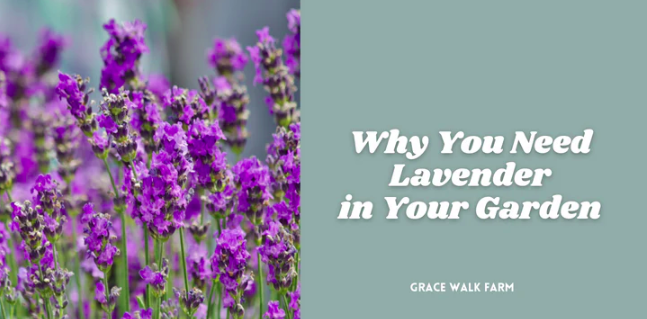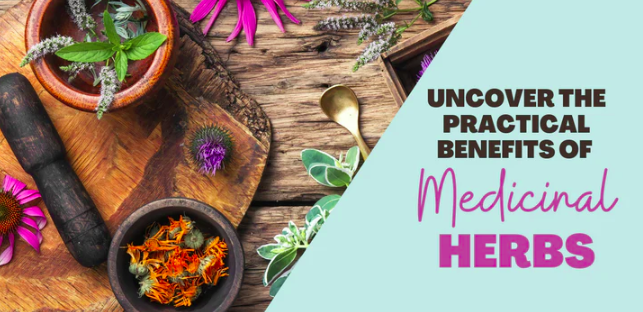Discover the Joy of Growing Your Own Herbal Tea
Are you a tea lover looking to take your tea hobby to the next level? Why not create your own tea garden? Growing your own herbs for tea is not only easy and fun, but it also allows you to customize your tea blends to suit your taste and preferences. In this beginner’s guide, I’ll show you how to create a tea garden that will provide you with an endless supply of fresh and flavorful herbs for your tea.
Welcome to Grace Walk Farm, our family homestead in western NC. We share the highs and lows of our homestead journey, in hopes that it will encourage you to grow your own food too. Click here to grab our Beginner Garden Guide for free! Join our 600K strong Instagram community of homesteaders here. Thanks for stopping by!

Starting a Tea Garden
The first step in creating a tea garden is to choose the right location. Your tea garden should be in a sunny spot with well-draining soil. Choose a spot that receives at least 6 hours of sun per day.
You can either plant your herbs in a designated garden bed or in containers if you have limited space.
Once you have chosen your location, it’s time to select the herbs you want to grow. There are many herbs that are perfect for tea, including mint, chamomile, lavender, lemon balm, and many more.

Choosing Herbs for a Tea Garden
When choosing your herbs, consider your taste preferences and the types of tea you like to drink. Mint, for example, is perfect for making refreshing and invigorating tea, while chamomile is great for soothing and relaxing tea.
Lavender adds a subtle floral flavor to tea, while lemon balm has a zesty and citrusy taste. You can also experiment with different herb combinations to create unique and delicious tea blends.
Here are some of the best herbs to plant in a tea garden, along with a short description of each:

Chamomile – Chamomile is a gentle and soothing herb that is often used to aid in relaxation and sleep. It has a sweet, apple-like flavor and can be enjoyed on its own or blended with other herbs.

Peppermint: Peppermint is a refreshing herb with a strong, minty flavor. It is often used to aid in digestion and can be enjoyed on its own or blended with other herbs.

Lemon Balm: Lemon balm has a bright, citrusy flavor and is often used to calm nerves and improve mood.

Lavender: Lavender is a fragrant herb with a sweet, floral flavor. It is often used to aid in relaxation and sleep and can be enjoyed on its own or blended with other herbs.

Echinacea: Echinacea is a medicinal herb that is often used to boost the immune system and fight off colds and flu. It has a slightly floral taste.

Rosemary: Rosemary is a flavorful herb with a slightly woody taste. It is often used to aid in digestion and can be enjoyed on its own or blended with other herbs.

Sage: Sage is a savory herb with a slightly bitter taste. It is often used to aid in digestion and can be enjoyed on its own or blended with other herbs.

Thyme: Thyme is a versatile herb with a slightly earthy taste. It is often used to aid in digestion and can be enjoyed on its own or blended with other herbs.

Lemon Verbena: Lemon verbena has a bright, citrusy flavor and is often used to aid in relaxation and digestion. It can be enjoyed on its own or blended with other herbs.

Spearmint: Spearmint is a refreshing herb with a slightly sweet taste. It is often used to aid in digestion and can be enjoyed on its own or blended with other herbs.

Planting Your Tea Garden
Once you have chosen your herbs, it’s time to plant them. If you’re planting your herbs in a garden bed, prepare the soil by removing any weeds and amending your soil with a few inches of compost.
Dig a hole for each herb and plant them at the same depth as they were in their original pots. Water your herbs thoroughly after planting. If you’re planting your herbs in containers, make sure they have drainage holes and fill them with a good quality potting mix.
Caring for Your Herbs
To ensure your herbs thrive and provide you with an abundance of flavorful leaves, it’s important to care for them properly. Water your herbs regularly, especially during hot and dry weather. You can also fertilize your herbs with an organic fertilizer once a month to promote healthy growth. Prune your herbs regularly to encourage bushy growth and prevent them from becoming too leggy.
Harvesting Your Tea Herbs
The best time to harvest your herbs is in the morning when the leaves are at their freshest. Use a pair of sharp scissors or pruning shears to snip off the top 1/3 of the plant, making sure to leave at least two sets of leaves on the stem.
You can either use your herbs fresh or dry them for later use. To dry your herbs, tie them in small bundles and hang them upside down in a well-ventilated, dry place. Once they are dry, store them in airtight containers away from light and heat.
Enjoying Your Homegrown Herbal Tea
Now that you have grown and harvested your herbs, it’s time to enjoy your delicious and flavorful herbal tea.
To make tea from fresh herbs, simply add a handful of leaves to a teapot or infuser and pour boiling water over them. Let the tea steep for a few minutes and then strain and enjoy. The flavor will intensify the longer it steeps.
To make tea from dried herbs, use about 1 tablespoon of herbs per cup of water and steep for 5-10 minutes. Add honey, lemon, or other flavorings to taste.
Creating a tea garden is a great way to take your love for tea to the next level. Whether you have a large garden or a small balcony, you can grow your own herbs for tea and enjoy the delicious flavors and aromas of fresh, homemade tea. With a little bit of planning and care, you can create a beautiful and productive tea garden that will provide you with an abundance of herbs for years to come.
Also check out these blogs:




